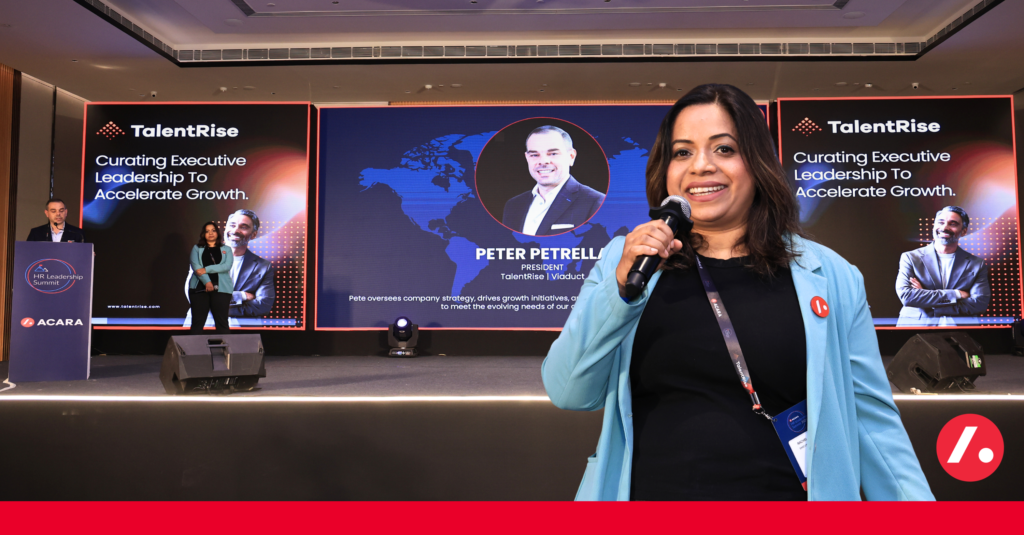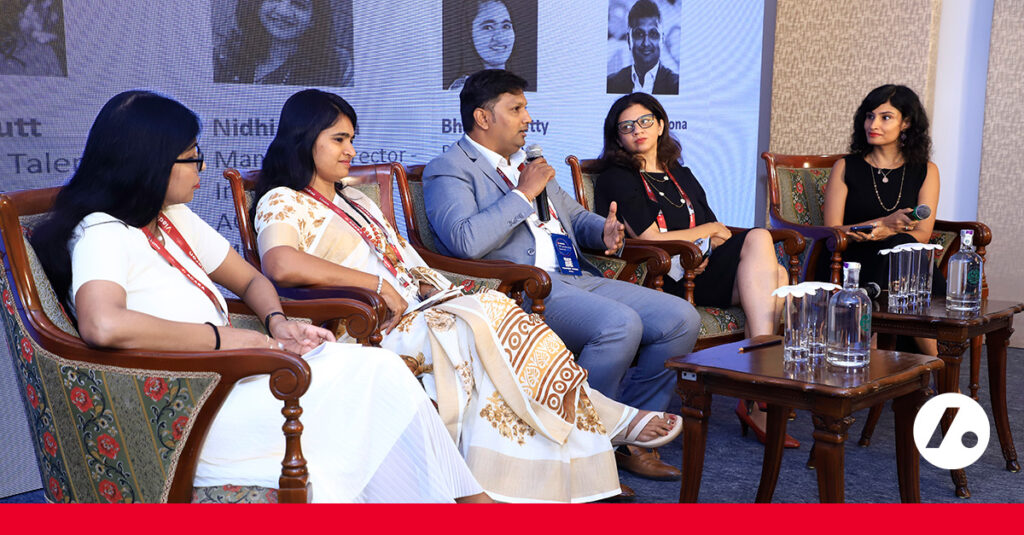
Closing the Gap: How Coaching Can Transform Executive Integration – Insights from HR Summit 2025
Originally presented at the TalentRise Panel during HR Summit 2025 in India
The Challenge of Executive Integration in Today’s Market
The statistics are sobering: 61% of executives are unprepared for the strategic challenges they are appointed for. Even more striking, 90% of CEOs look back and believe they should have managed their integration differently. This reality underscores a critical gap in how organizations onboard their most crucial leaders.
During a recent panel discussion at HR Summit 2025, Pete Petrella, President of TalentRise, and Rachel Gojer, Master-Certified Executive Coach with TalentRise, explored this pressing challenge facing organizations across India and globally. Their insights reveal the problem’s scope and actionable solutions that can transform executive success rates.
The True Cost of Poor Executive Integration
Research consistently shows that:
- 60% of executives report it took them six months to reach full impact in their new roles
- 20% required more than nine months to become fully integrated
- The majority of executive failures in the first 18 months stem not from lack of competence, but from integration challenges
The Business Impact
Consider the mathematics of executive hiring in India’s market:
- 2-3 months for recruitment and interview processes
- 2-3 months’ notice period for the selected candidate
- Minimum 6 months for the new executive to reach full productivity
This timeline means organizations face a 12+ month gap from position opening to full executive performance — a period of significant business impact, lost revenue, and operational strain.
What Really Happens During Executive Transitions?
During the summit’s interactive session, participants reflected on their own experiences joining new organizations. The emotions were universal:
- Excitement mixed with anxiety
- Fear of the unknown
- Intimidation despite professional confidence
- Hope for better opportunities
These feelings are natural, but they highlight why even the most capable leaders struggle during transitions.
Common Integration Pitfalls
The panel identified several key obstacles that slow executive integration:
For New Executives:
- Building early impressions without full organizational context
- Information overload leading to decision paralysis
- Unclear communication of expectations and needs
- Making assumptions based on previous organizational experiences
- Snap judgments from limited interactions
- Lack of big-picture perspective
For Organizations:
- Pressure to fill productivity gaps quickly
- Insufficient time allocated for relationship building
- Uncommunicated expectations about performance
- Cultural mismatches between individual and organizational values
- Ambiguous terminology around leadership styles and company values
The Solution: Strategic Executive Coaching Integration
Introducing Fast Start Coaching
TalentRise’s Fast Start Coaching program addresses these challenges through a structured, coaching-based approach to executive integration. Successfully implemented in the US market with a five-star rating and 100% participant recommendation rate, the program focuses on accelerating productivity while establishing clear 90-day goals.
The Four Pillars of Successful Integration
1. Curriculum – Building the Right Mindset
- Growth mindset development
- Resilience training
- Learning orientation over judgment
2. Community – Understanding the Bigger Picture
- Organizational context and strategy alignment
- Stakeholder mapping and engagement
- Systems thinking development
3. Connection – Relationship and Goal Alignment
- Building trust with immediate managers and teams
- Clear communication of expectations
- Collaborative goal setting
4. Culture – Values Integration
- Understanding organizational values beyond corporate scripts
- Personal-organizational value alignment
- Cultural navigation skills
The Coaching Methodology
The program leverages several proven frameworks:
- ICF-certified coaching methodologies
- Positive Intelligence principles
- Predictive Index assessments
- Coactive Institute philosophy
Measuring Success: The ROI of Faster Integration
Organizational Benefits
Summit participants identified several key impacts of faster executive integration:
- Increased ROI on executive hiring investments
- Revenue growth through faster decision-making
- Enhanced stakeholder confidence
- Improved operational efficiency
- Competitive advantage through reduced transition time
- Better workload management for existing team members
Individual Benefits
For executives themselves, structured integration support provides:
- Faster achievement of belonging and confidence
- Reduced stress and anxiety during transitions
- Clearer understanding of success metrics
- Stronger relationships with key stakeholders
- Enhanced long-term career trajectory
Key Takeaways for HR Leaders
1. Integration is Strategic, Not Administrative
Executive integration requires the same strategic attention as recruitment. It’s not just about orientation – it’s about optimizing performance from day one.
2. Coaching Makes the Difference
Professional coaching during the integration period can dramatically reduce time-to-productivity while improving long-term retention and performance.
3. Relationships are Critical
The relationship between a new executive and their immediate manager often determines integration success. Investing in this relationship alignment pays dividends.
4. Culture Must Be Lived, Not Just Explained
Moving beyond corporate scripts to help executives understand how values and culture manifest in daily operations is crucial for alignment.
5. Time Investment Yields Time Savings
While it may seem counterintuitive when facing productivity gaps, investing time in proper integration accelerates overall time-to-impact.
The Global Perspective: TalentRise’s Expansion into India
TalentRise’s recent incorporation in India reflects the growing recognition that leadership challenges are global in nature. As Pete Petrella noted during his first visit to India, the commitment and dedication of Indian professionals, combined with the warmth of the culture, create unique opportunities for cross-cultural leadership development and global talent optimization.
This expansion enables organizations to leverage proven integration methodologies while adapting them to local cultural contexts and business practices.
Looking Forward: The Future of Executive Integration
The panel’s insights point toward a future where executive coaching becomes a standard component of leadership transitions rather than a remedial intervention. Organizations that recognize the strategic value of proper integration will gain competitive advantages through:
- Higher executive retention rates
- Faster achievement of strategic objectives
- Stronger organizational culture
- Improved leadership pipeline effectiveness
- Enhanced reputation as an employer of choice
Conclusion: Making the Investment in Integration
The message from HR Summit 2025 was clear: the cost of poor executive integration far exceeds the investment in doing it right. With research showing that proper integration supported by coaching methodologies can dramatically improve retention, performance, and team dynamics, the question isn’t whether organizations can afford to invest in executive coaching integration – it’s whether they can afford not to.
As Rachel Gojer emphasized, “It’s one of the best and most effective executive development interventions, especially for people in high-stakes positions navigating high-stakes challenges.”
For organizations ready to transform their executive integration process, the path forward involves recognizing integration as a strategic imperative, investing in proven coaching methodologies, and creating systems that support both individual success and organizational performance.
Want to learn more about Fast Start Coaching and executive integration solutions? Connect with TalentRise team members or reach out through their India operations for customized leadership development solutions.




